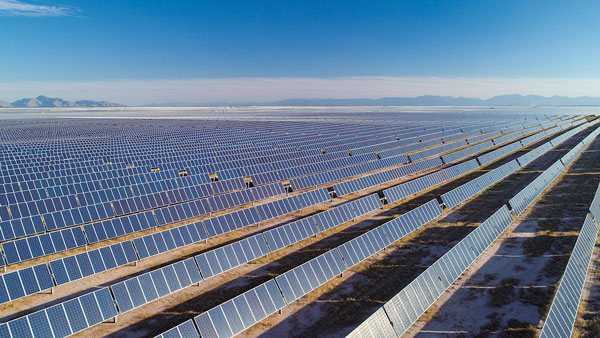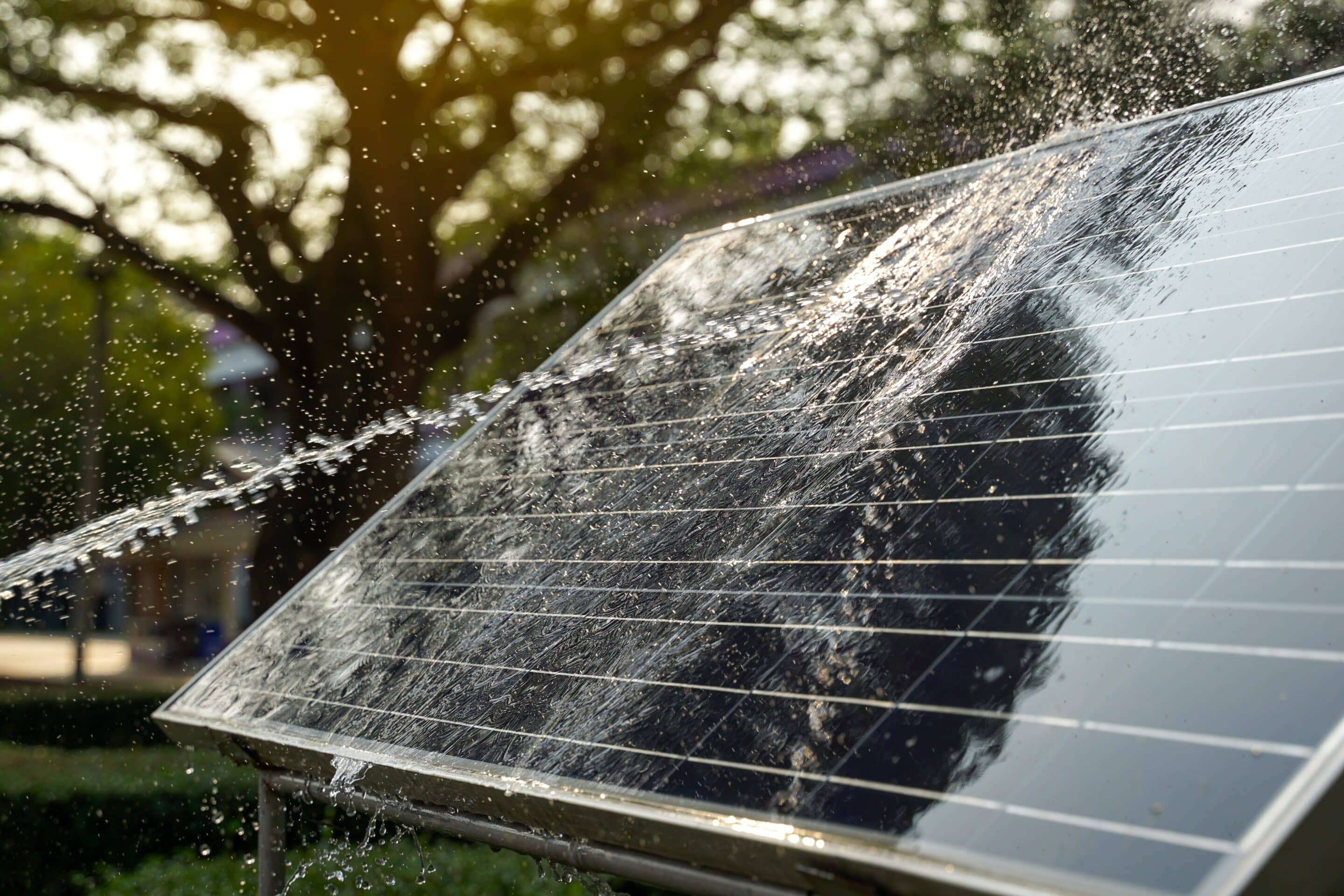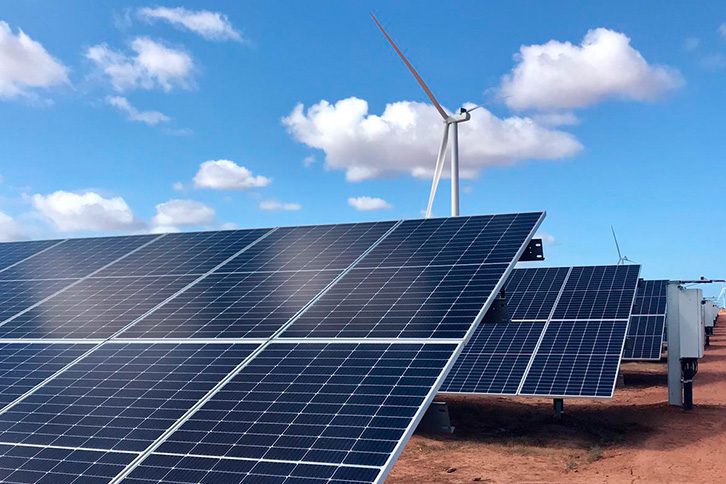Flexibility in Installation
Thin-film solar panels are ultimately more flexible than their rigid counterparts, making them a superior option for mobile installations. There are several advantages to preferring thin-film panels, among them the following.
SetUp Speed and Portability
Thin-film panels are lighter and easier to set up than standard panels. According to Solar Magazine, an average thin-film cell might weigh 4 pounds per square meter, while a crystalline cell would double that. This allows people to prefabricate temporary installations for events or mobile solutions for RVs and boats. An example of such a solution is the application of thin-film cells on the ceilings of emergency response vehicles as part of the 2020 California Mobile Solar Project, as the roofs were not only curved but also had to withstand frequent travel to remote areas.
Low Material Impact
Thin-film panels can be installed in ways that do not harm the host building or require heavy infrastructure. In an example, Jadwiszczak describes the installation of a solar array on an urban historic building in Boston. To preserve the building, the engineers had to attach the cells directly to roofing membranes with an adhesive backing rather than drilling holes so that the cells do not sit a single way off the perfectly flat surface. This is the opposite of thick crystalline panels, which would require adding expensive and invasive infrastructure.
Econ omic Benefits
The reasons to prefer thin-film solar panels go beyond environmentalism. Cost-Effective for Large Installations: Thin-film solar panels are generally less expensive per square foot than the traditional ones. In 2019, a study found that the use of such technology on commercial buildings could save up to 18% in installation costs. Incentives and Subsidies: the New York Solar Initiative provides 10% extra subsidy for installations of thin-film panels on historic buildings, the low-size and entertainment value of which they maintain in a way traditional cells would not. On the other hand, the one-time cost of the project would only run from $90 to $200 per square foot, which is negligible compared to installation and panel costs.
Reduced Environmental Impact
There are also environmental reasons to use thin-film solar panels. Shorter Energy Payback Time: Thin-film panels are not only less material- and energy-intensive but also achieve payoff of the energy used for the entire manufacturing process faster. According to a report by the National Renewable Energy Laboratory, these panels have a payback time of eighteen months, compared to at least three years for crystalline silicon ones. Recyclability: manufacturing of thin-film panels that apply cadmium telluride is also beneficial because the components are more easily recycled. An example is thin-film cells recycled in the San Diego Green Tech Program as educational displays for community centers after use in disaster-recovery portable energy stations.
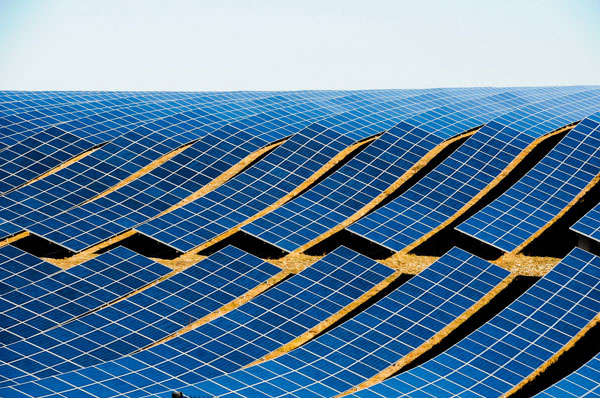
Lightweight Design
Thin-film solar panels are known for their extremely low weight, making these panels a more preferable option for mobile installations where the weight of each component matters. Significant Weight Reduction: Usually, the thin-film panels weigh no more than 1 pound per square foot as opposed to the conventional solar panels whose average ranges from 2 to 3 pounds per square foot. The thinner glass layers enhance the mobility of solar panels and facilitate handling and installation processes, especially in case the working conditions do not permit heavy physical work. For example, during the setup of a mobile medical unit in rural Nebraska, the workers were easily placing the thin-film panels on top of the unit without any specialized crane equipment. Furthermore, due to such low weight, it took the workers less than two hours to install panels on the roof of the mobile unit.
Enhanced Versatility
Another benefit of the reduced weight of the thin-film panels is the extended range of potential application for solar equipment. Increased Application Range: Thin-film solar panels can be installed in environments that are incapable of supporting the weight of conventional glass solar panels, including historic buildings made of fragile material or temporary structures for events. For instance, the Solar Urban Initiative in San Francisco was using adhesive mountings for solar panels in order to avoid putting drilling holes into the rooftops. In this way, the installations did not interfere with the integrity of the rooftop surface and left no trace once the panels were removed.
Reduced Structural Load
Meanwhile, the progress of solar panel technology does not presuppose the reduction in the weight of the construction as a whole. Minimized Impact on the Structure: The reduced weight of thin-film panels called for the panels being a safer option for usually older buildings or temporary installations. In the case of a historic building in Charleston, the modern structure of the solar panels was deemed too weighty for the building, thus putting it at risk of damage. Greater Mobility for Emergency Situations: The benefit of thin-film panels being lightweight and more easily deployable in the case of disaster relief. In the aftermath of hurricane Ida, portable thin-film solar arrays were used to power the equipment necessary for emergency communication. Lower Shipping Expenses: Possibly the only disadvantage of the technology is the expense associated with manufacturing the light materials. The shipping cost of the thin-film panels used in one of the installation in Alaska was approximately 30% lower than the cost of regular panels, which is an unarguable significant savings.
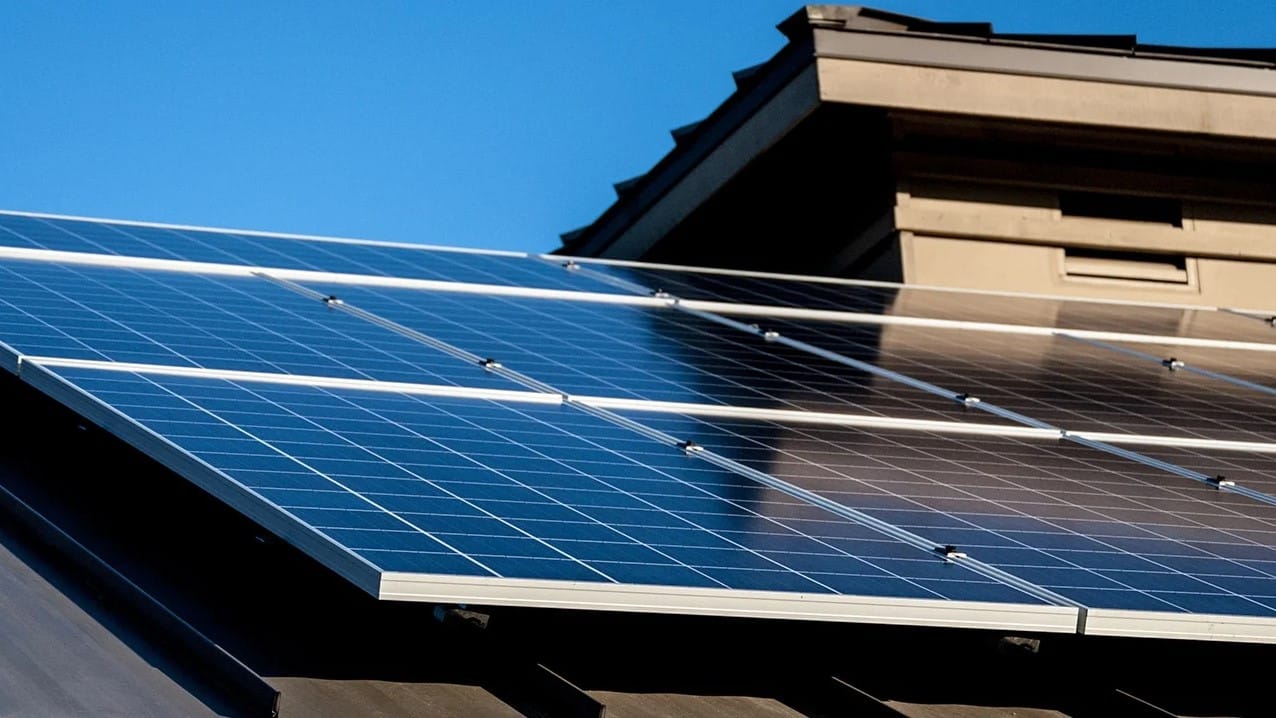
Durability Under Movement
Thin-film solar panels are not only lightweight and versatile but also exceptionally durable. As such, they have become the ideal solution for mobile installations, where considerable movement and varying conditions are expected.
High Tolerance to Physical Stress
Thin-film panels are made of materials that can sustain bending, somewhere extremely important during transportation, or the put in place of mobile metallic structures. For instance, thin-film panels mounted on a car survived a trip around the U.S. that spanned over 10,000 miles of movement without any performance degradation.
Resistance to Environmental Factors
Thin-film panels also have an environmental advantage resulting from their structural properties. The materials and design features of thin-film panels make them naturally resistant to basic environmental factors such as temperature changes and humidity – which is essential for outdoor and mobile use. For example, thin-film performance was tested under Arizona’s hot sun, indicating a less than 0.25% output decrease per degree of increasing temperature when the average for crystalline was several times higher. They are also less susceptible to moisture ingress than their typical counterparts, as was evidenced in their performance in the Florida Everglades, one of the United States’ most humid areas.
Flexibility of Deployment
Qui ck Adjustment to Different Surfaces: Thin-film properties allow them to be mounted wherever necessary almost instantly – a great benefit during mobile deployment, where one’s environment may be quite varied. For example, thin-film panels were mounted on portable shelter fabric to power the lights in a disaster zone.
Reconfiguration: In mobile installation, reconfiguration must be a possibility for at least two reasons. First, a mobile installation can be put to multiple uses, and achieving the most advantageous configuration can well require trial and error. Second, the installation may need to be moved and reinstalled, and thin-film technology allows for this to happen quickly. In a mobile military base, for example, thin-film panels were taken down and reinstalled across several areas during a quick combat move, each installation took no more than half an hour to complete.
Practical Longevity
Regardless of their frequent movement and overall rough conditions where they are placed, thin-film panels have proven to be inherently durable, with data from a study of mobile units indicating 90.7% of original production after five years. Their durability also means that they require much less maintenance than other panels – in fact, their low maintenance is a significant part of the cost-effectiveness of thin-film panels for mobile applications. In particular, a study of thin-film and crystalline solar systems placed at construction sites across one Nevada county found that the thin-film utility required up to 30% less maintenance due to their lower susceptibility to cracking and other physical forms of deformation.
Ease of Replacement
It is important to note that thin-film solar panels are not only durable and lightweight, but they are also easier to replace than traditional solar panels. Such panels are best suited for mobile and temporary installations where rapid replacement is critical.
Quick swap
Modular design: Since such panels are usually smaller and more manageable, they are also often modular as well. For example, a solar technology company attended an outdoor festival in Colorado when a high-wind event toppled a large group of outdoor booths, including the monitor devices from the group’s booth. However, all that was needed to ensure the booth retained power was a quick panel swap of the thin-film panel, which was done in under 15 minutes.
Easy Installation
Several of the benefits of quick temperature installation also apply to replacement. No heavy equipment: The thin-film is both lightweight by itself and does not require additional heavy mounting systems, so a repair or maintenance technician can easily replace it by hand as needed. For example, in a project involving a rescue animal shelter on an extremely remote island in Hawaii, traditional panel replacement would have required a boat to deliver equipment and another for the cranes. Consequentially, team found that thin-film panels are less expensive in remote areas than traditional photovoltaic stations
Pre-configured connections: In fact, most thin-film solar panel systems take the form of a plug-and-play system in which pre-configured connections significantly reduce the technical skills required to replace the actual panel. For example, an energy technology provider designed by a former Google as their very first tech installation in a volunteer organization in rural Africa. As a result, the learned papers teams did post-evaluation missions there, as they’ve had the technology for a few years now and it has been found to have been a complete tool for the mission team.
Reduced disruption of operation
Quick repair or maintenance: Smaller panels can be replaced more easily, so the transport and installation of repair or maintenance need not be moved. Because there are so many light stations in an urban setting that are plugged into batteries and solar panels are being switched to thin-film, we were able to maintain nearly 24-hour operation of the light stations in downtown by switching them out every night.
Cost-effective management
Lower replacement cost: usually the cost of replacing thin-film solar panels is lower than the cost of replacing a traditional photovoltaic panel itself. However, the advantage is not only that the cost of the panel itself is less than that of traditional panels, maintenance and repair operations on traditional panels must constantly be done with additional heavy equipment that is not needed to install or repair thin-film solar panels. A study conducted by the company found that by replacing the commercial building’s energy system in New York with a thin-film solar panel, the user’s overall annual maintenance costs will be reduced by 22%.
Inventory management benefits: Finally, because the such panels are smaller and more consistent in size, it is easier to store and manage an inventory of replacements. A mobile health clinic does not have to keep all such inventory at each of its sites across several different states. This user has standardized on as the routinely-used replacement part for its network of mobile health clinics, as only this single part need be handled.
Cost Considerations
When it comes to selecting thin-film solar panels for mobile installations, the first consideration is, of course, the cost. As it affects both the initial investment and long-term savings, the financial aspect is perhaps the most critical one. Compared to crystalline products, thin-film technology often has a number of unique financial advantages which make it an excellent solution for a variety of applications.
An analysis of cost acquires relevance when resp. a choice of thin-film panels is considered. Such an approach is justified by the influence of each specific peculiarity of this technology on the cost distribution. Typically, the lodgments or the physical perimeter should be considered as such peculiarities. These features offer financial benefits which turn thin-film panels into an excellent opportunity for various mobile applications.
Lower Initial Purchase Price
Thin-film panels are usually cheaper for the initial investment than their crystalline analogues. The average price per solar watt for thin-film panels is about $0.50; meanwhile, traditional crystalline models can reach $1 per watt. A case in point is a fleet of food trucks in Los Angeles. The minor costs of thin-film technologies were essential not only in terms of powering the relatively small size of the installations but also for the long durations of the photovoltaic vehicles to offset these startup expenses.
Reduced Installation Costs
Lightness and flexibility along with it: Not requiring a robust mounting system, the panels are easy to handle and install, saving a lot of time and expenses from the physical act of installing. For instance, during the renovation of rented accommodations in Miami, the cost of installations was reduced by 25% for this reason. The thin-film panels were light and easy to fit, simplifying the installation and mounting process compared to the cumbersome crystalsclerosis of previous decades. A similar case occurred with a mobile clinic, which has to be relocated and deported into different ecological climates, with no need to maintain thin-film panels over five years.
Operational Efficiency
Being powered by solar cells, thin-film materials operate more efficiently in non ideal light conditions. For example, a study of a mobile installation with a commercial Stand-Alongi, which is highlighted by the lack of operation in the Seattle sky, organized by the festival in the downtown area. The study showed that the thin-film panels here generated 10% more economic results.
Lower Maintenance and Replacement Costs
Thin-film Big Elements performs well in mobile clinics with little maintenance over the last five years, which is useful to take into account over time. A comparative study of a mobile commercial installation in New York held in 2015 showed that the cost per day of replacement and maintenance with thin-film replicas is cumulatively lower and can achieve payback a year earlier.
Quicker Breakeven Point
The final advantage of thin-film panels is that their cumulated installation, maintenance, and operational costs enable the end user to achieve the payback time soon. Yet another analysis of the 2015 New York mobile industrial installation proved that thin-film crystals achieved payback by their user one year earlier than the crystalslescled predecessors. Various jurisdictions also frequently motivate using eco-friendly materials by offering incentives and rebates. For example, a green technology grant for the year of 2019 in California also grants a rebate of 20% from the expenditures for installing solar panels on a mobile unit.
Energy Efficiency for Mobile Use
Thin-film solar panels are best suited for mobile applications because they are unique in converting sunlight into energy efficiently, especially when lighting is always changing. One of the most compelling features making thin-film solar panels appropriate for mobile applications is the ability to provide optimal performance in low-light conditions. These panels excel in diffuse sunlight, which comes by default in overcast days and is prone in partially shaded locations. Thin-film solar panels operate at 12 percent efficiency, which is relatively higher than the 7 percent for traditional crystalline panels. This case was established with food delivery drones in Seattle, that thin-film can retain their charge through the day and night even with Seattle’s constant cloudy weather.
Thin-film solar panels are best suited for mobile applications because they are unique in converting sunlight into energy efficiently, especially when lighting is always changing. The reason is their ability to generate better lighting through all ambient temperatures than standard panels. This appears because their temperature is relatively less sensitive to temperatures than standard solar technology. The worst-case scenario is in Arizona, where a thin-film panel maintains the sound system and light during the summer music festivals, though the temperature is high for most standard panels.
Thin-film solar panels are best suited for mobile applications because they are unique in converting sunlight into energy efficiently, especially when lighting is always changing. Advanced absorption technologies apply through incorporating photovoltaic materials that are more exposable, like cadmium telluride or amorphous silicon. In a pilot project, two thin-film panels were installed on the tops of moving trains harvested enough energy to allow lighting all night along the journey despite the short day of winter season. The three efficiency benefit in applying thin-film solar panels to power mobile applications for a power loss of irrelevant shading, therefore, excellent in moving vehicles.

